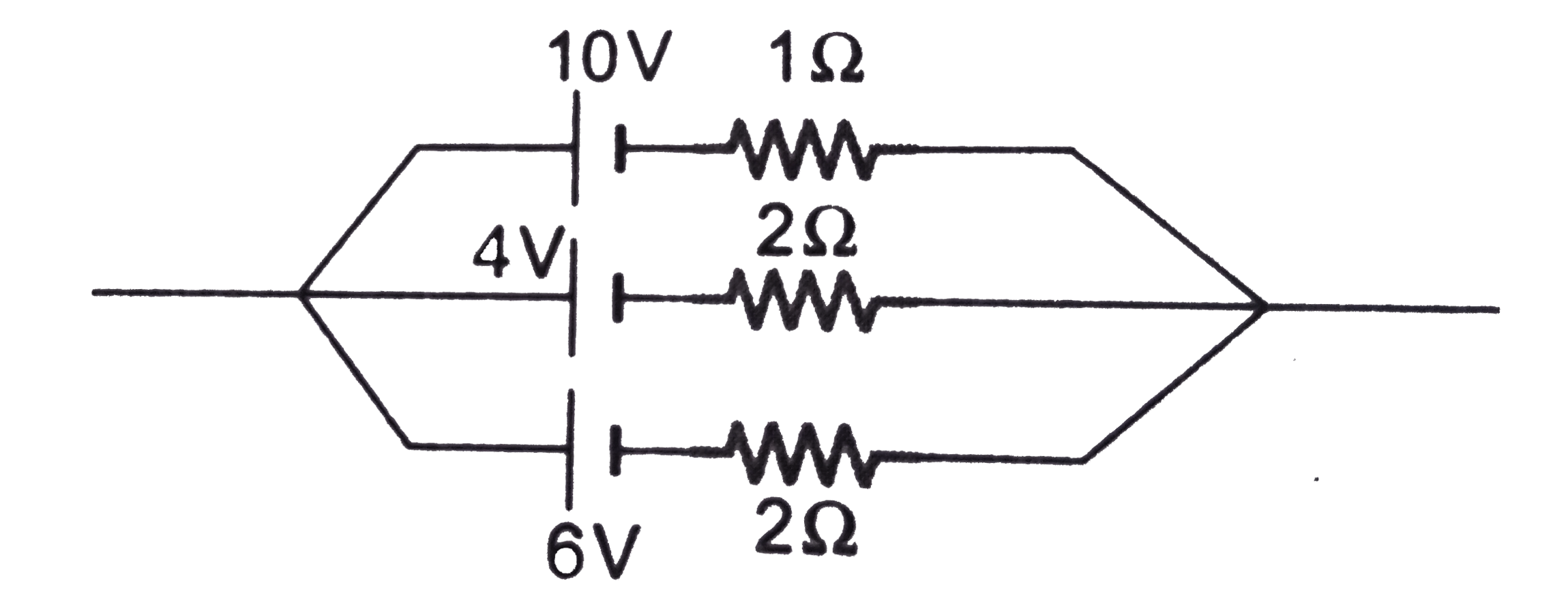the nonideal batteries are connected in series. Consider the following statements :
(A)The equivalent emf is larger than either of the two emfs.
(B) the equivalent internal resistances is smaller than either of the two internal resistances.
(Each of A and B is correct.
(b)A is correct but B is worng
(c )B is correct but A is worng
(d)each of A and B are worng
The correct Answer is:B
Step by step video, text & image solution for the nonideal batteries are connected in series. Consider the following statements : (A)The equivalent emf is larger than either of the two emfs. (B) the equivalent internal resistances is smaller than either of the two internal resistances. by Physics experts to help you in doubts & scoring excellent marks in Class 12 exams.
Updated on:21/07/2023Topper's Solved these Questions
- ELECTRIC CURRENT IN CONDUCTORSBook:HC VERMAChapter:ELECTRIC CURRENT IN CONDUCTORSExercise:Objective 2
Explore 9 Videos
- ELECTRIC CURRENT IN CONDUCTORSBook:HC VERMAChapter:ELECTRIC CURRENT IN CONDUCTORSExercise:Exercises
Explore 84 Videos
- ELECTRIC CURRENT IN CONDUCTORSBook:HC VERMAChapter:ELECTRIC CURRENT IN CONDUCTORSExercise:Short Answer
Explore 17 Videos
- DISPERSION AND SPECTRABook:HC VERMAChapter:DISPERSION AND SPECTRAExercise:Exercises
Explore 11 Videos
- ELECTRIC CURRENT THROUGH GASESBook:HC VERMAChapter:ELECTRIC CURRENT THROUGH GASESExercise:Exercises
Explore 23 Videos
Similar Questions
Two non ideal batteries are connected in parallel with positive terminals. Consider the following statements:
(A)The equivalent emf is smaller than either of the two emfs.
(B) The equivalent internal resistance is smaller than either of the two internal resistances.
View SolutionIf three cell are connected in parallel then equivalent emf……. and equivalent internal resistance is …..

View Solution
Knowledge Check
Two non-metal batteries are connected, in parallel. Consider the following statements.
(i) The equivalent emf is smaller than either of the two emfs.
(ii) The equivalent internal resistance is smaller than either of the two internal resistances.ABoth (i) and (ii) are correctB(i) is correct but (ii) is wrongC(ii) is correct but (i) is wrongDBoth (i) and (ii) are wrongTwo non-metal batteries are connected, in parallel. Consider the following statements.
(i) The equivalent emf is smaller than either of the two emfs.
(ii) The equivalent internal resistance is smaller than either of the two internal resistances.ABoth (i) and (ii) are correctB(i) is correct but (ii) is wrongC(ii) is correct but (i) is wrongDBoth (i) and (ii) are wrongTwo non-ideal identical batteries are connected in parallel. Consider the following statements
(i) The equivalent e.m.f. is smaller than either of the two e.m.f.s
(ii) The equivalent internal resistance is smaller than either of the two internal resistancesABoth (i) and (ii) are correctB(i) is correct but (ii) is wrongC(ii) is correct but (i) is wrongDBoth (i) and (ii) are wrong
Find the equivalent emf and internal resistance of the arrangement shown in figure.

View SolutionAssertion : Two non-ideal batteries are connected in parallel with same polarities on same: side. The equivalent emf is smaller than either of the two emfs.
Reason : Two non-ideal batteries are connected in parallel, the equivalent inter resistance is smaller than either of the two internal resistances.
View SolutionIf n cells each of emf E and internal resistance are connected in parallel, then the total emf and internal resistances will be
View SolutionThe equivalent resistance of two resistor connected in series is 6Ω and their equivalent resistance is 43Ω. What are the values of resistances ?
View SolutionSix cell each of emf E and internal resistance r are connected in series. If due to over sight, two cells are connected wrongly, then the equivalent emf and internal resistance of the combination is
View Solution
